Which Side of the Line Numbers Puzzle
This blog post contains Amazon affiliate links. As an Amazon Associate, I earn a small commission from qualifying purchases.
In this which side of the line numbers puzzle, students must determine if the numbers 9 and 10 go above or below the line.
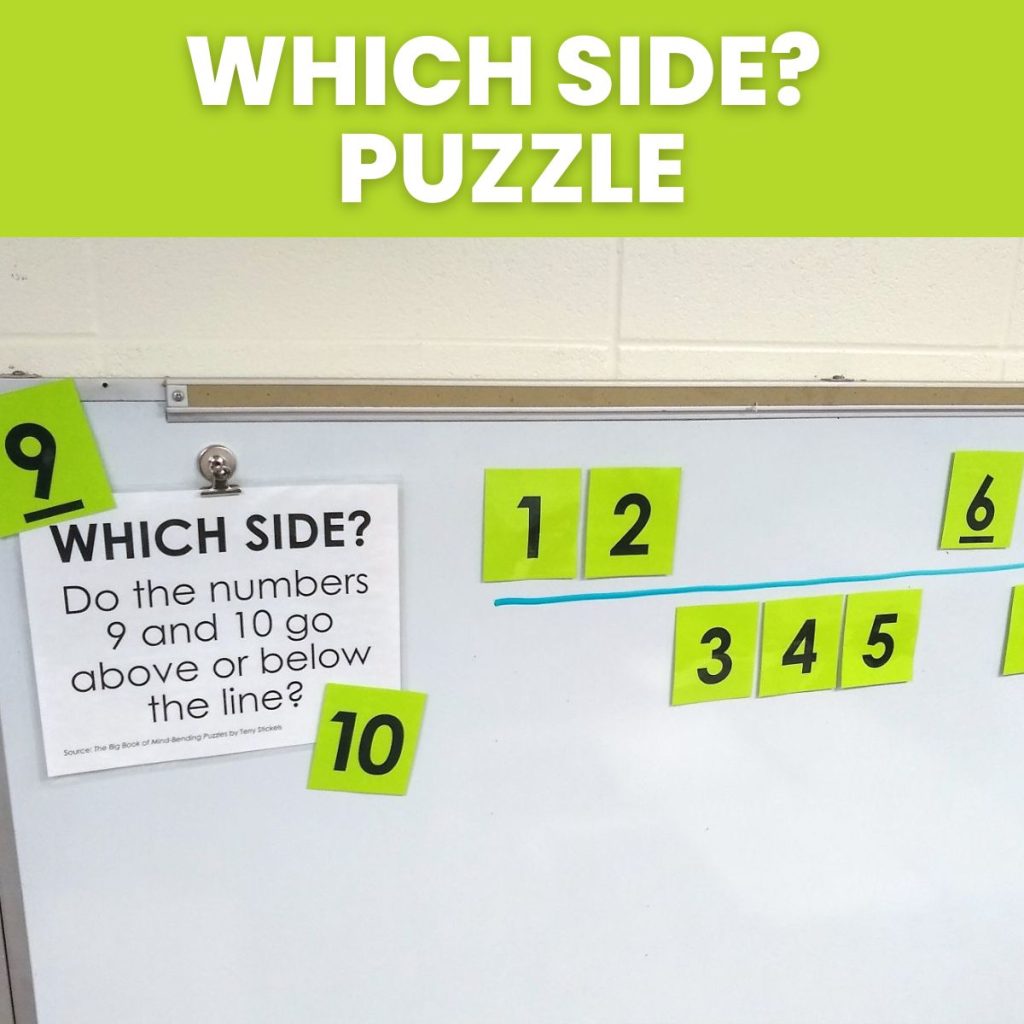
I ran across this puzzle in The Big Book of Mind-Bending Puzzles by Terry Stickels and decided it would make a great puzzle to put up in my classroom.
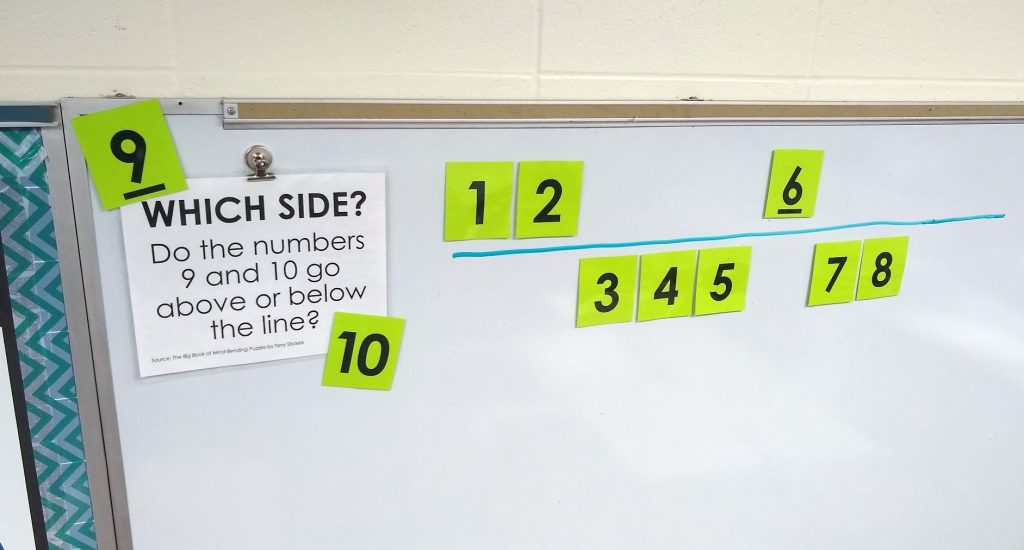
I typed up the numbers from 1 to 10 and printed them on colored squares. I placed a magnet on the back of each square so I could hang it on my dry erase board, but you could also use tape to attach these to whatever surface you are using.
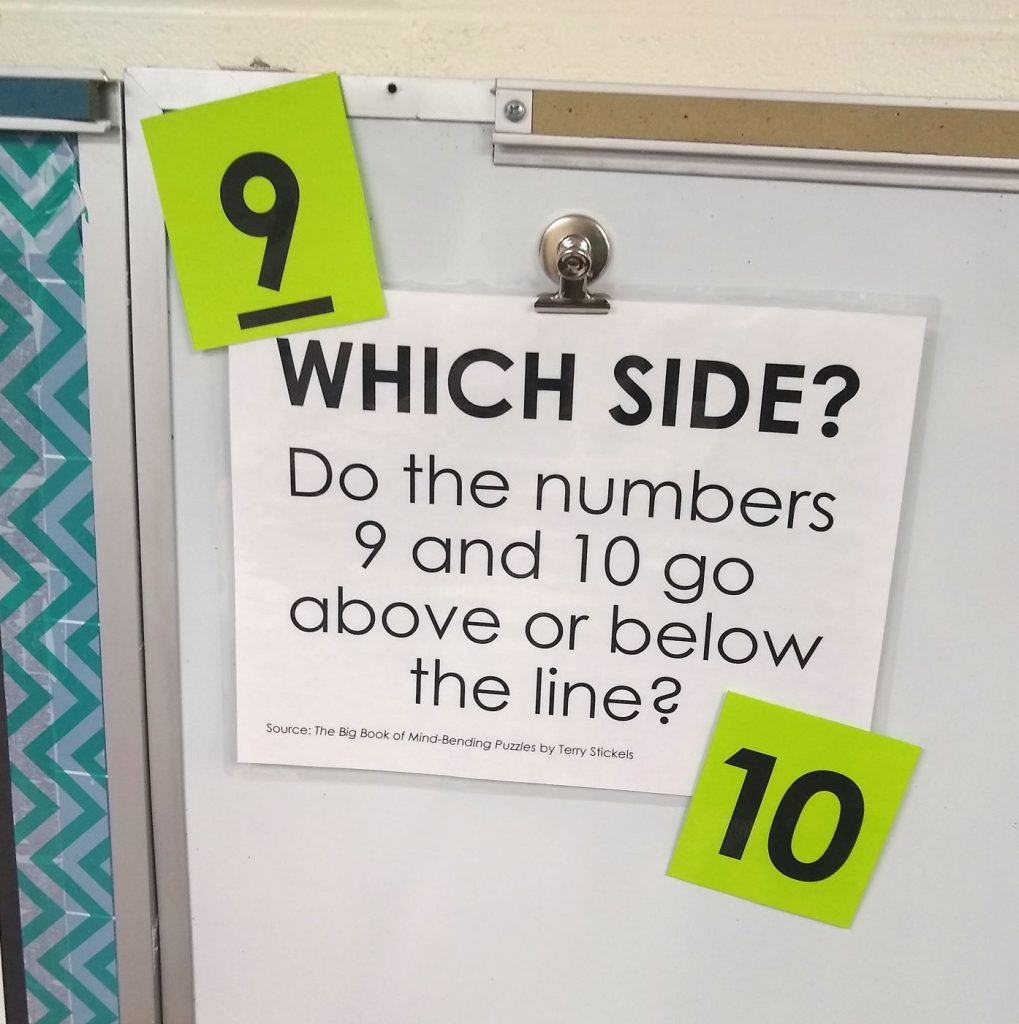
I use ceramic disc magnets with all of my puzzles. I buy the magnets in bulk from Amazon. They are reasonably priced and strong enough to hold things up without them sliding down the dry erase board. I’ve used almost 400 of these magnets in the past year or so.

If you don’t want to cut out individual squares for each number, I also created another version of the instructions that includes the number diagram on the instruction page.
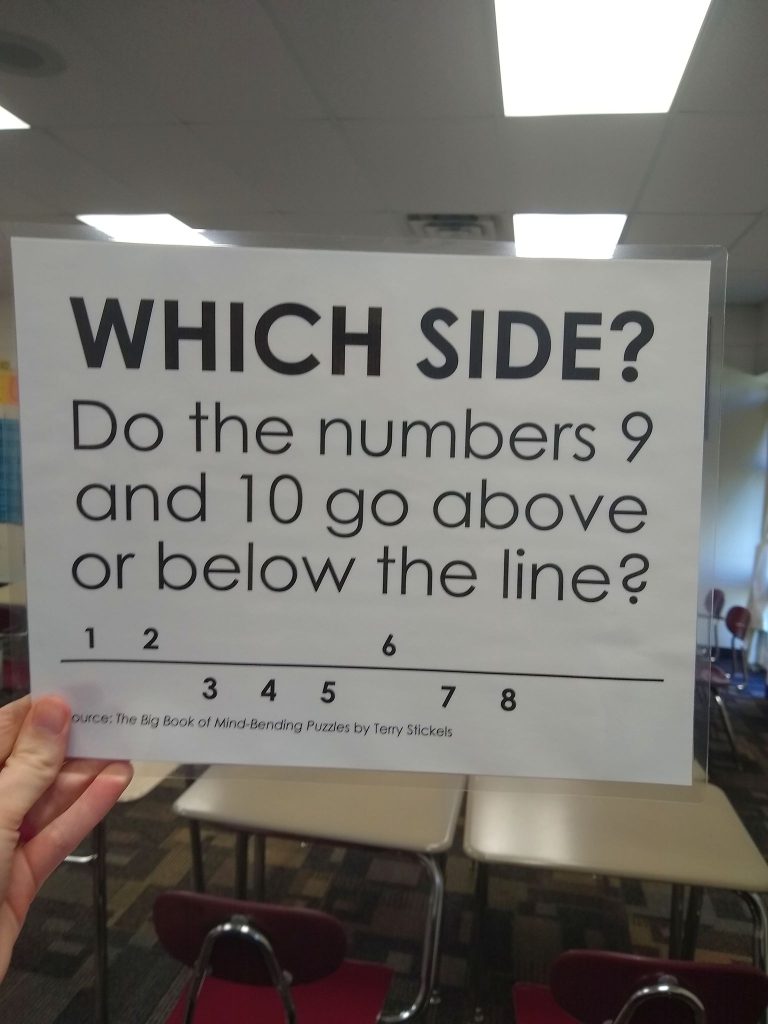
I also created another version of the puzzle that prints three to a page so you can hand students a small version of the puzzle to solve.
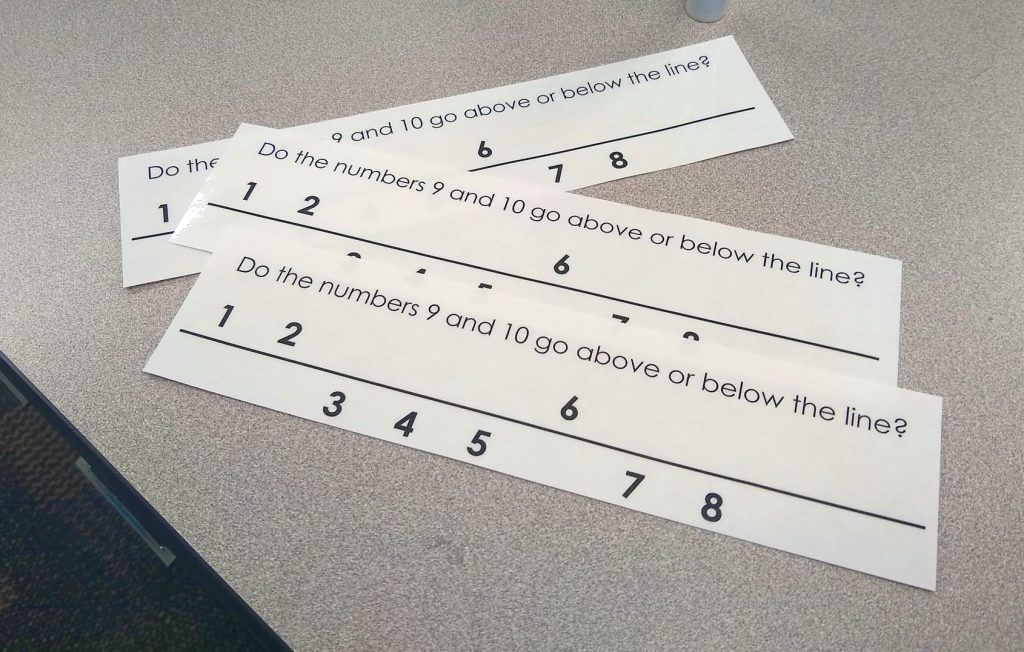
It’s been very interesting to listen to my students share their theories this week about whether 9 and 10 go above or below the line.
Puzzle Files
Want more puzzles to engage your students? Check out my puzzles page!
Puzzle Solutions
Puzzle solutions are available on a password-protected solution page. I do not openly post the puzzle answer keys because one of my goals as a resource creator is to craft learning experiences for students that are non-google-able. I want teachers to be able to use these puzzles in their classrooms without the solutions being found easily on the Internet.
Please email me at sarah@mathequalslove.net for the password to the answer key database featuring all of my printable puzzles and math worksheets. I frequently have students emailing me for the answer key, so please specify in your email what school you teach at and what subjects you teach. If you do not provide these details, I will not be able to send you the password.
Not a teacher? Go ahead and send me an email as well. Just let me know what you are using the puzzles for. I am continually in awe of how many people are using these puzzles with scouting groups, with senior adults battling dementia, or as fun activities in their workplace. Just give me enough details so I know you are not a student looking for answers to the puzzle that was assigned as their homework!

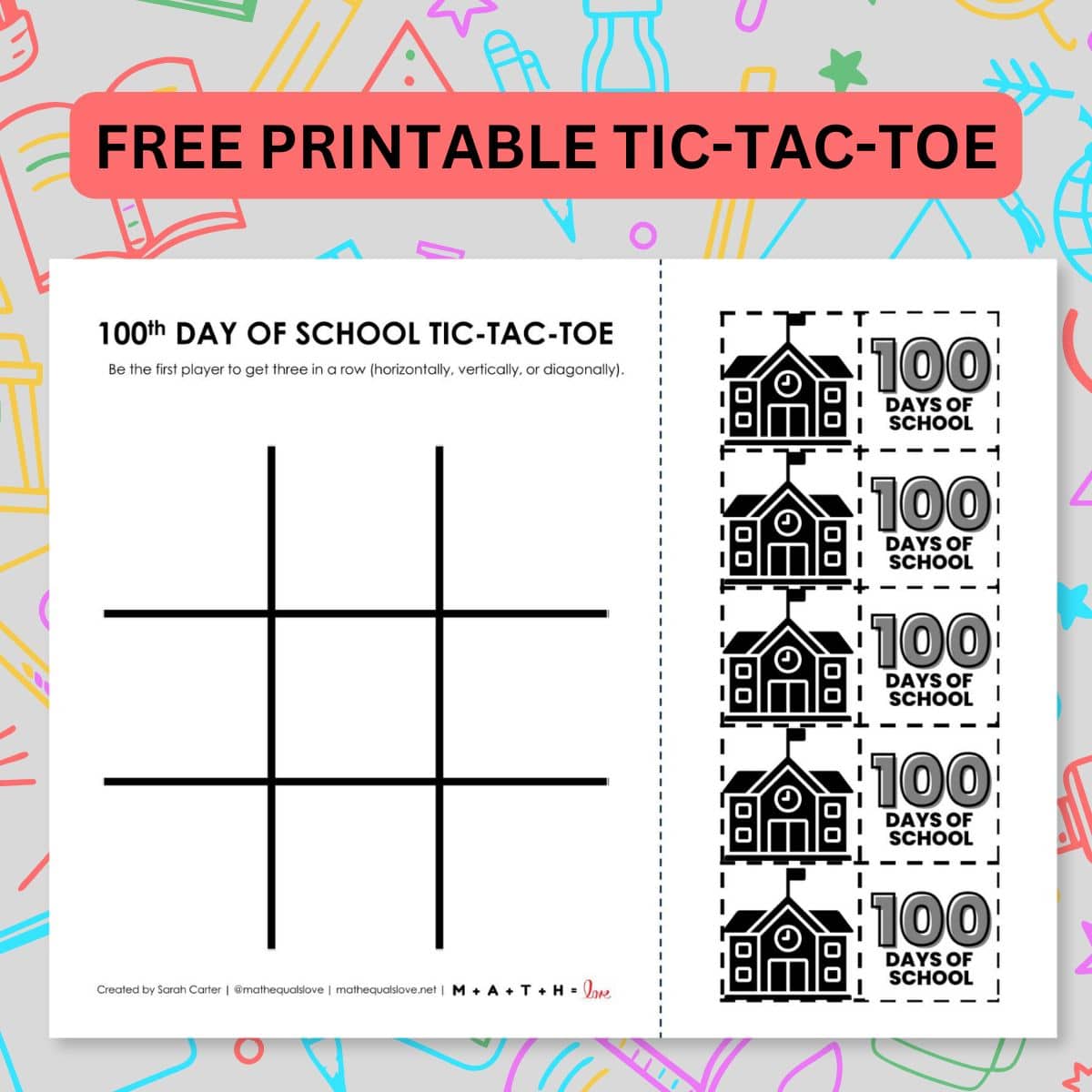
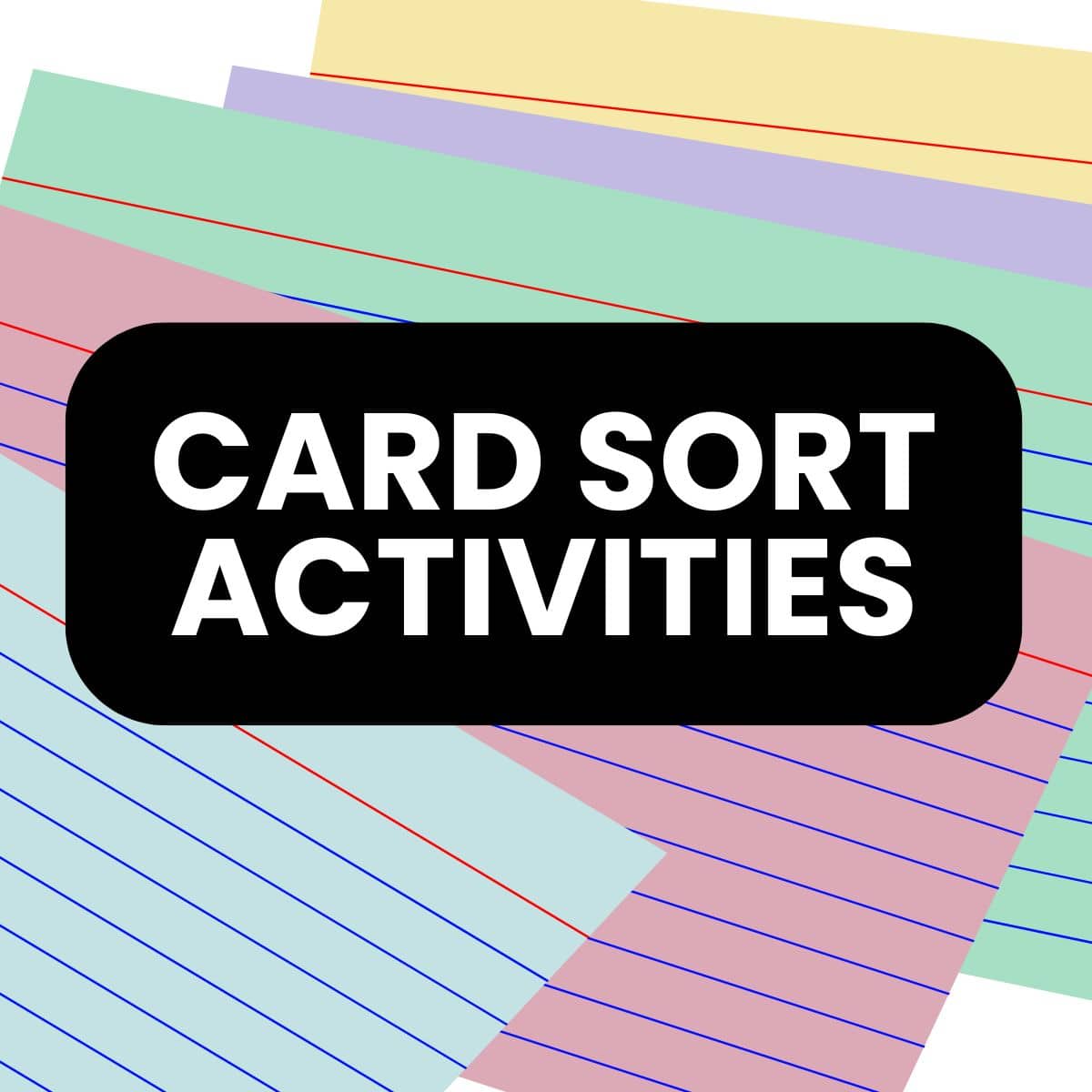
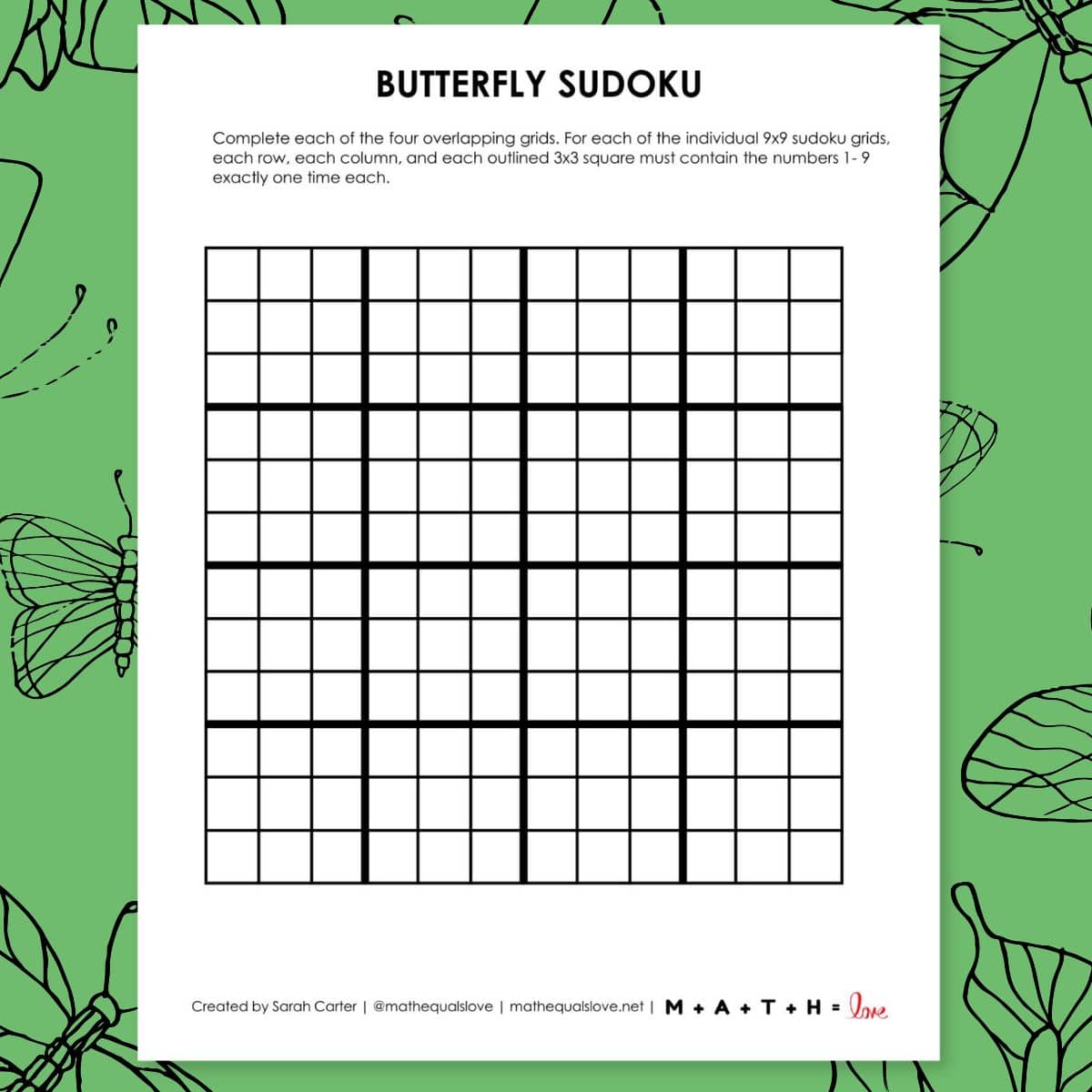
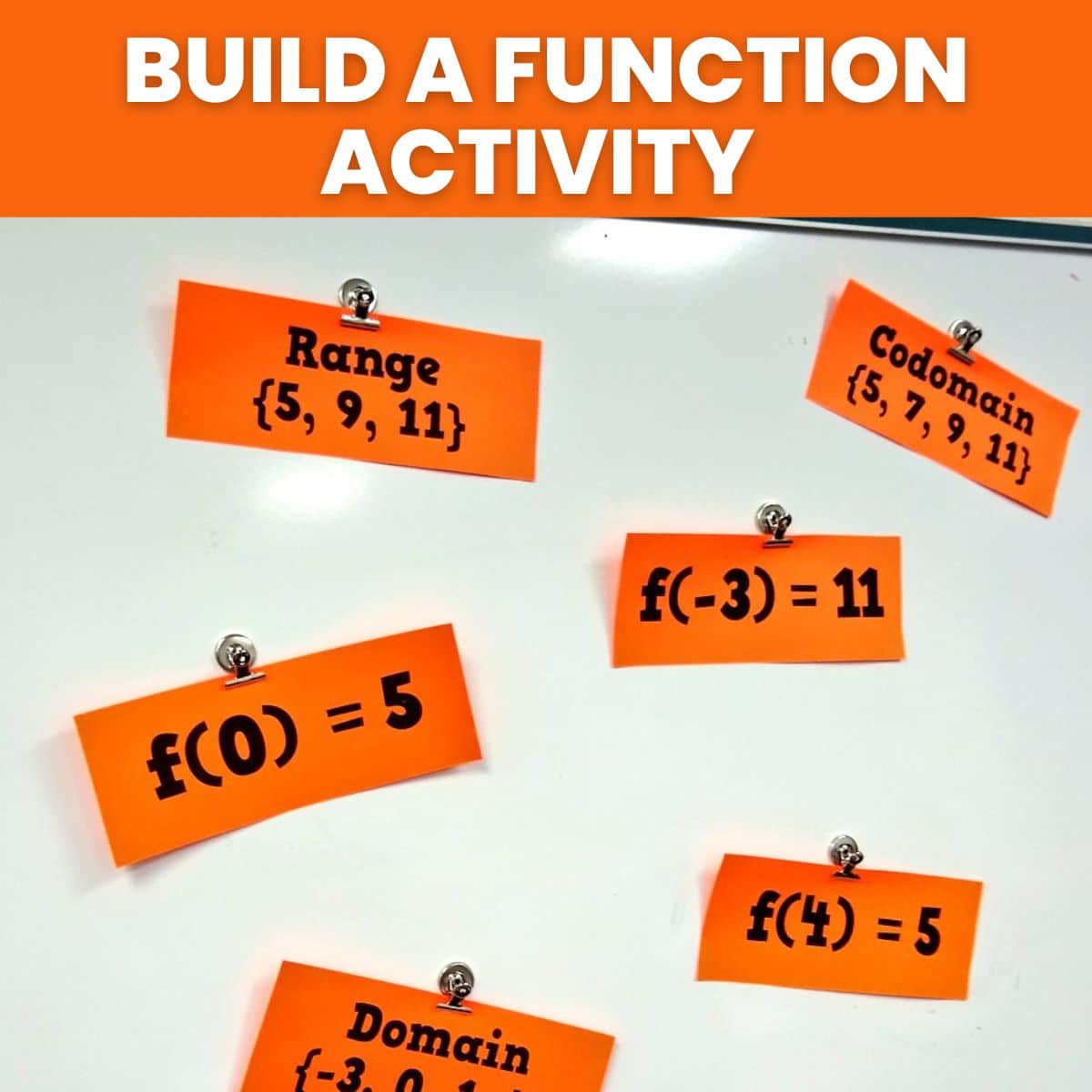
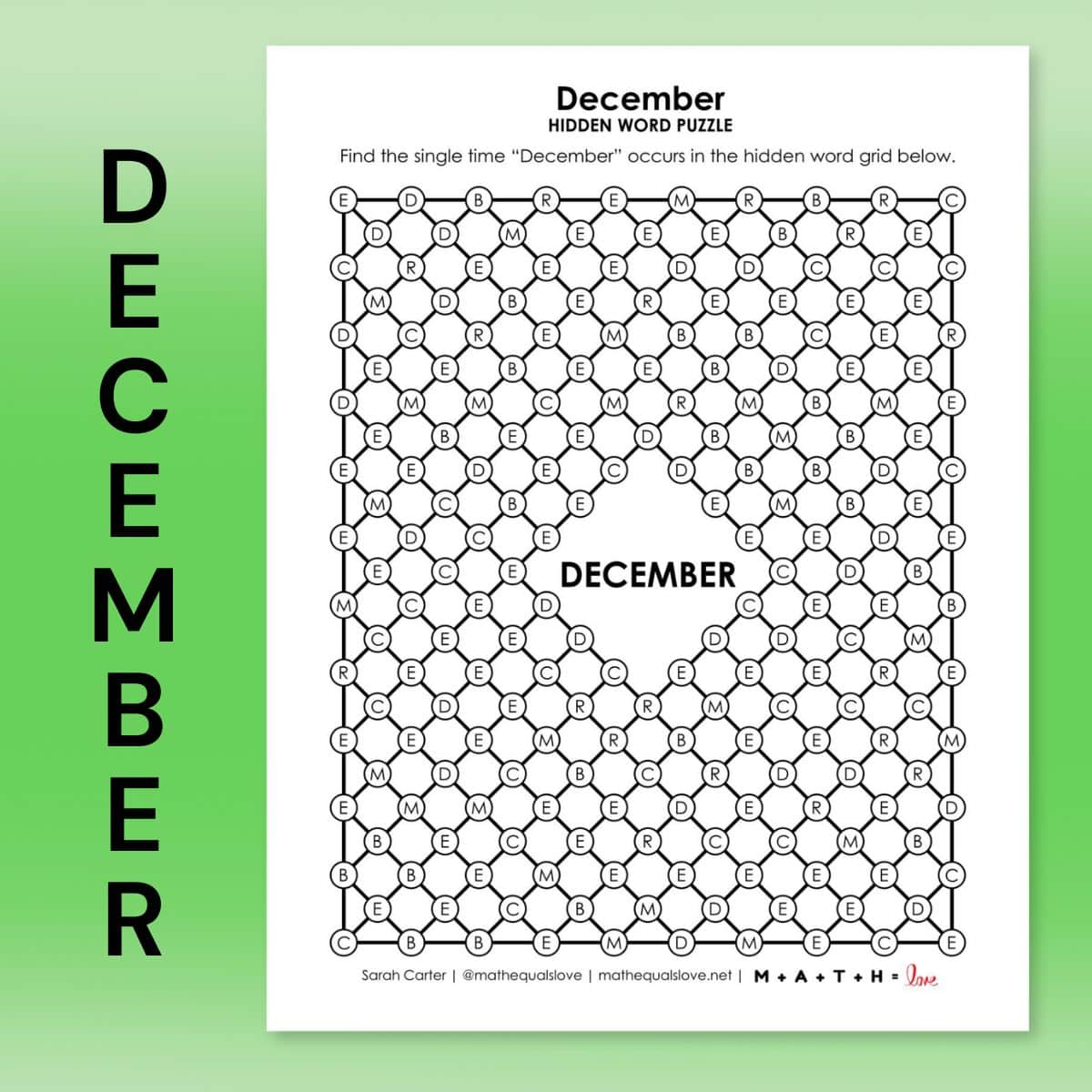
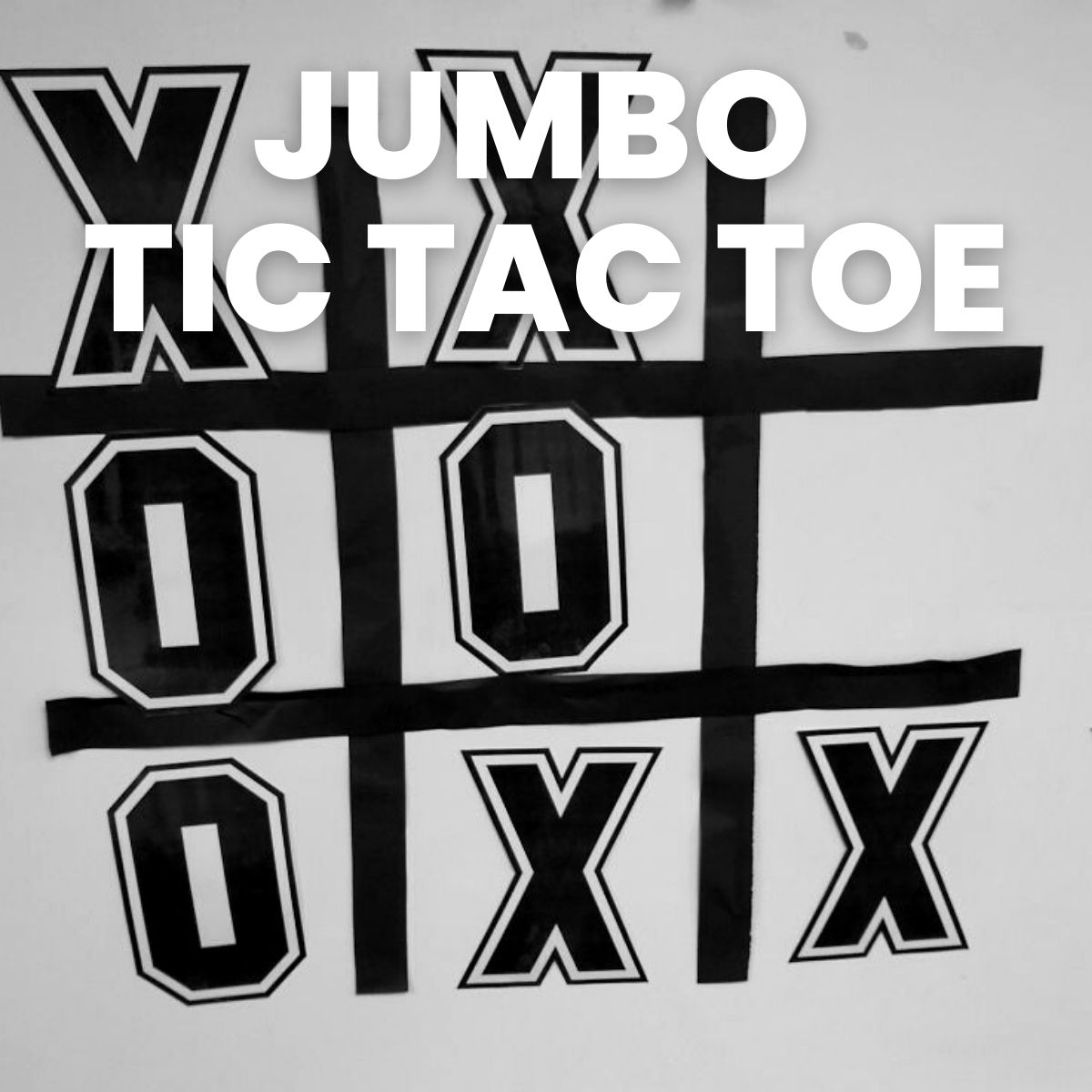
Are you using this as a number talk? Would you say there are multiple answers?
I just posted it as a puzzle for students to stew over. You could definitely use it as a number talk, though. I think that there are multiple answers as long as students can justify them.
Hello Sarah. Thank you for sharing all those fun puzzles. I wonder how you decided on the puzzles and the day to give to students. I mean are they related to what you are teaching in class? If not, I wonder how you would manage the time between going through curriculum and those fun puzzles.
Usually, I just post the puzzles on my dry erase board and students work through them when they have extra time. Some students work on them before or after class or when they finish an assignment early. I only do whole-class puzzles on special occasions. For example, I have a puzzle I like to do on Pi Day with all of my students.
I would love to do more full-class puzzle solving, but like you mentioned, there is never enough time! Occasionally, we will have school days where assemblies/events mess up the schedule for part of the day. I will often do puzzles with my other students on these days since I like to keep all of my students in the same place in the curriculum.